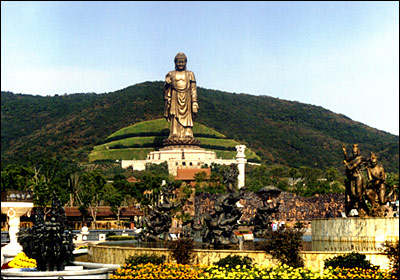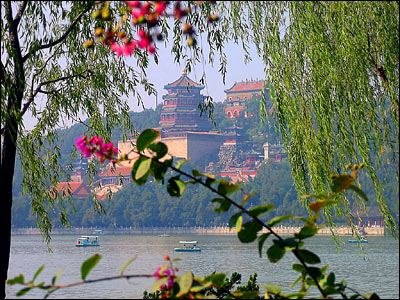 Historical and Cultural Sites
Historical and Cultural Sites
China's long history has left many cultural relics and the title of "China Top Tourist City" has gone to the first batch of 205 cities.

The Great Wall, a symbol of the Chinese nation, is a prime example of China's historical sites that have become major tourist attractions. As the greatest defense-structure project in the history of human civilization, it dates back more than 2,000 years ago to the Spring and Autumn and the Warring States periods. With its huge scale and incomparable grandeur, it can be called one of the wonders of the world. Today there are 10 sections of the Great Wall open to tourists, including the passes, blockhouses and beacon towers at Badaling in Beijing, Laolongtou and Jiayuguan Pass.
Grottoes, cliff paintings and sculpture are also splendid treasures of China's tourism resources. China's grottoes are mostly concentrated along the ancient Silk Road in Gansu Province. The best known is the Mogao Caves, a "treasure house of oriental art" with 492 caves with murals and statues on the cliff face. The total area of the murals is about 45,000 sq m and there are over 2,100 colorful statues, all of high artistry and imagination. In the south, grotto art is represented in Sichuan Province by the Leshan Giant Buddha, carved into a cliff face. At 71 meters high and 28 meters wide, it is the largest sitting Buddha built of stone, and shows the superb carving skills of ancient craftsmen.
The Shaolin Temple in Henan Province, the birthplace of Chinese Zen Buddhism, was first built in 495 and is famous for its Shaolin kungfu martial arts. Here one can see the famous Ming Dynasty Five-Hundred-Arhats mural, and the Qing period Shaolin kungfu paintings. In Hubei Province, beautiful Wudang Mountain has 72 grotesque peaks within a radius of 30 km. A sacred site of Taoism, it preserves China's most complete, largest-scale and best ancient Taoist architecture. In western Sichuan Province, Mount Emei, dotted with ancient Buddhist temples and monasteries, is one of China's four holy Buddhist mountains.

There are 101 famous historical and cultural cities in China, most of which are over 1,000 years old. To the south of the Yangtze River, Suzhou and Hangzhou, long known as "paradise on earth," are crisscrossed with rivers, lakes, bridges, fields and villages, as beautiful as paintings. Today's well preserved Pingyao Old City in central Shanxi Province was built in the Ming Dynasty but was also a site of Neolithic era Yangshao and Longshan cultures of 5,000-6,000 years ago. The ancient city of Lijiang in Yunnan Province is not only the center of the Naxi minority Dongba culture, but also a meeting point for the cultures of Han, Tibetan, Bai and other ethnic groups. Built in the Song Dynasty, this city has many stone bridges, stone memorial arches and civilian houses which provide precious materials for studying the history of Chinese domestic architecture and can be called a "living museum of ancient civilian houses."
